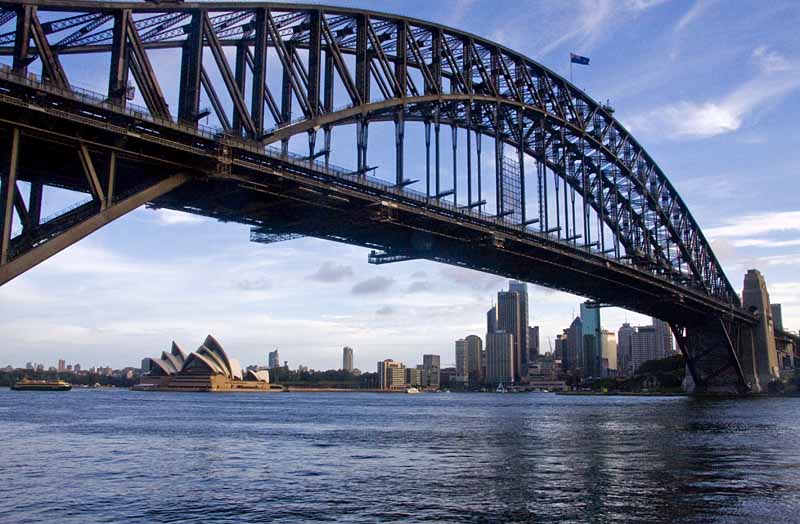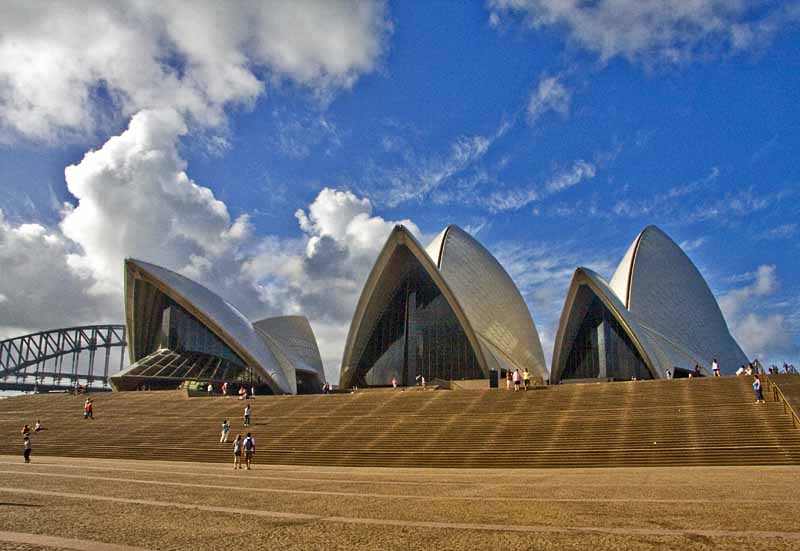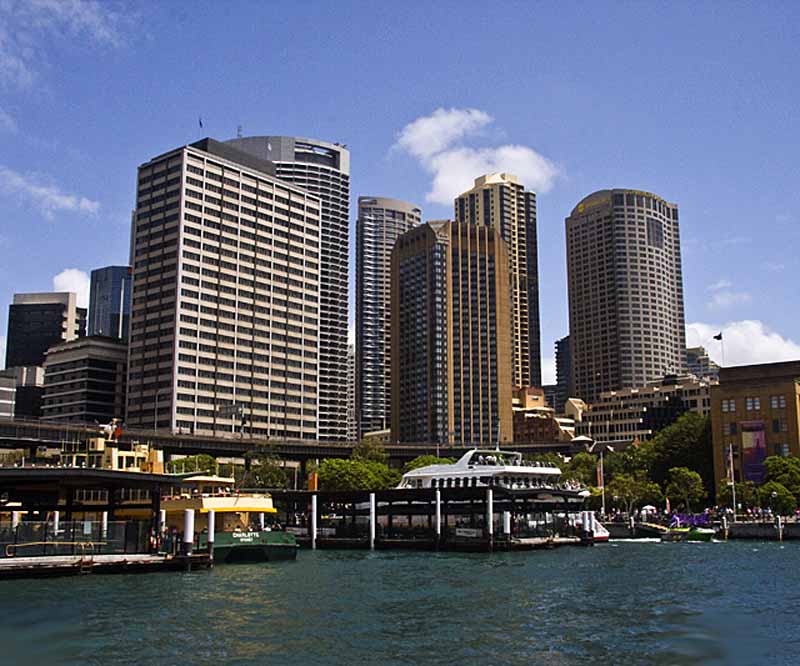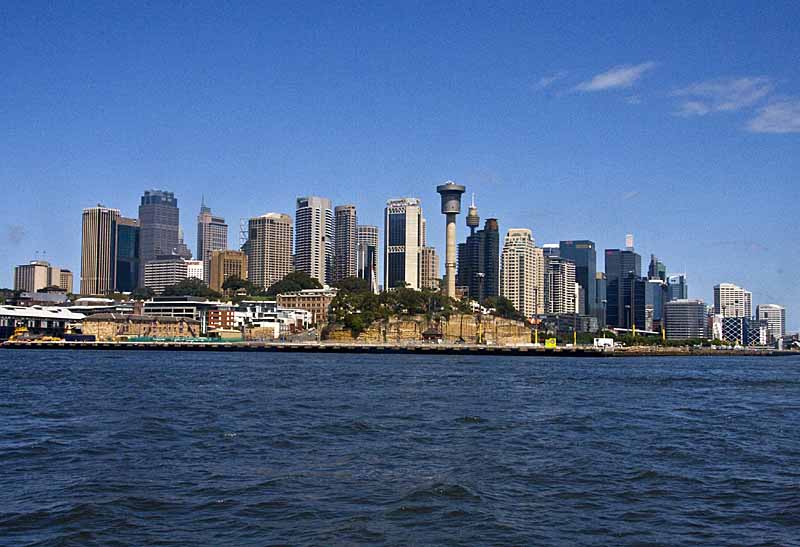A Trip to Australia and New Zealand
Sydney
- Arrival at Sydney Cove
"The Rocks" was the location of the very first European settlement in Australia. Arthur Phillip and the "First Fleet" landed in Sydney Cove on January 28, 1788, and immediately set about to establish the first settlement in the new colony of Australia. Slowly, using convict labor, the British established a working port with warehouses, ship chandler's shops, customs and port offices, and all of the other things necessary to an eighteenth century seaport including taverns and bawdy houses. It was a rough neighborhood dominated by toughs, prostitutes, gamblers, thieves, and seamen who had just gotten shore leave after spending months at sea. They called it "The Rocks." In 1900, it was hit by the bubonic plague and plans were developed to demolish all of the old buildings and redevelop the area. The First World War stopped that work for a while, but during the Great Depression it was decided to build Sydney Harbor Bridge and more of the old structures were raised to the ground. World War II came along and again stopped redevelopment, but in the 1960s the Sydney Cove Redevelopment Authority was formed and planning again went forward to modernize the area. Public opinion reshaped the government plans into an effort to retain the area as a historic section of the city with tourist amenities. The emphasis now is to restore rather than to rebuild.

Today, Sydney Cove is surrounded on three sides by The Rocks, The Opera House, and Circular Quay. Inland from Circular Quay is the central business district and Sidney Town Hall. Sydney Harbor Bridge connects The Rocks with the suburb of Dawes Point which is the location of a large amusement park - Luna Park. There was some controversy as to exactly who designed the bridge, but the official version gives credit to John Job Crew Bradford, a prominent early twentieth century Australian public works engineer who clearly played an extremely important role not only in building this bridge, but in designing a modern transportation system for the city.

The Sydney Opera House is a multi-venue performing arts center. It was designed by the Danish Architect Jorn Utzon and built between 1959 and 1973 at the cost of $102 million which was $95 million over budget. Utzon received the prestigious Pritzker prize for his design, but resigned from the project under a storm of criticism before it was completed. Queen Elizabeth II, as Queen of Australia, opened the Opera House on October 20, 1973. Beethoven's Symphony No. 9 was performed and Utzon was not invited. In 1999 Utzon was rehabilitated and subsequently assisted the Sydney Opera Trust that manages the facility with various design issues. Utzon died in 2008 and a memorial service in his honor was performed at the Opera House in 2009. The Sydney Opera House is an iconic symbol not only for the city, but also for the country as a whole. There are over 1,500 performances in a wide variety of disciplines that play to an audience of over 1.2 million people each year.

Circular Quay is a large communications center involving a major train station, city bus stops, half a dozen ferry quays, an automobile expressway, a berth for cruise ships, pedestrian walkways and malls, a major museum, the city library, as well as numerous restaurants and large areas of green space. The very modern buildings of the commercial and business center of Sydney hover over it. The Sydney Opera House on Bennelong Point is on one side of it and The Rocks neighborhood is on the other.

Seen from another angle, Sydney is a very impressive modern megopolis. In fact, it is one of the very largest sprawls of humanity anywhere in the world. It is also one of the cities consistently ranked very high in the various lists of the world's best places to live as well as the planet's most expensive cities.
